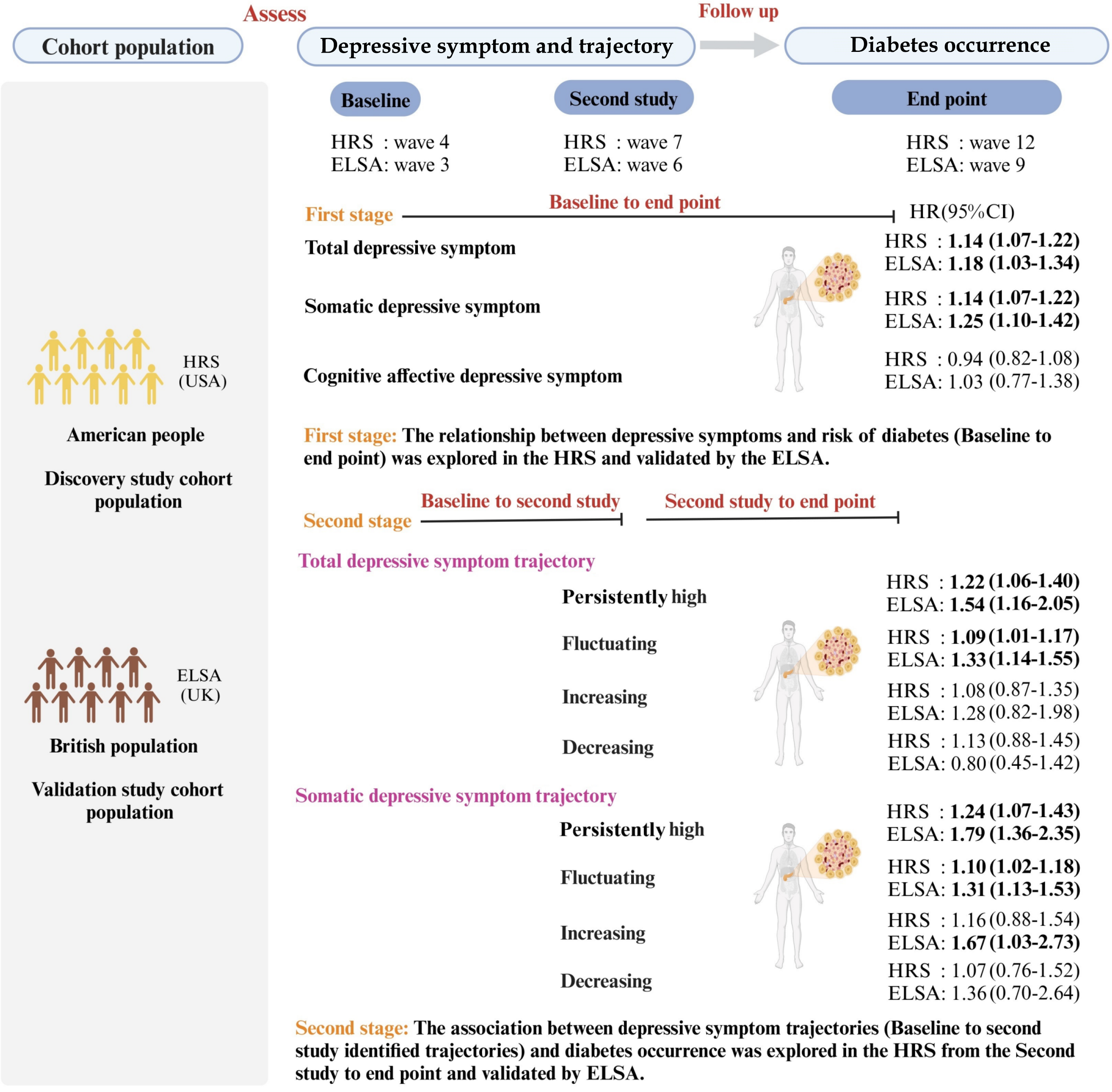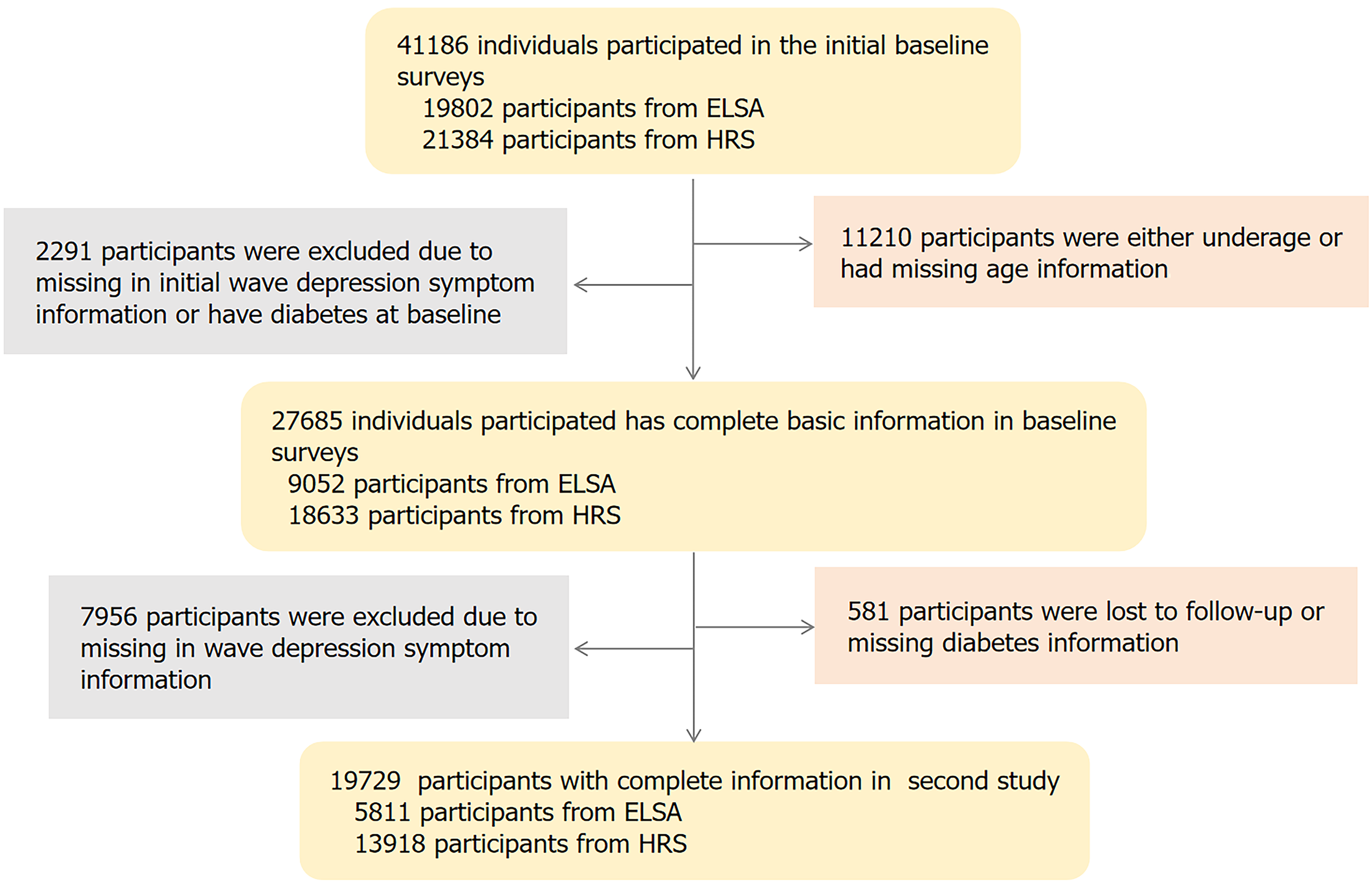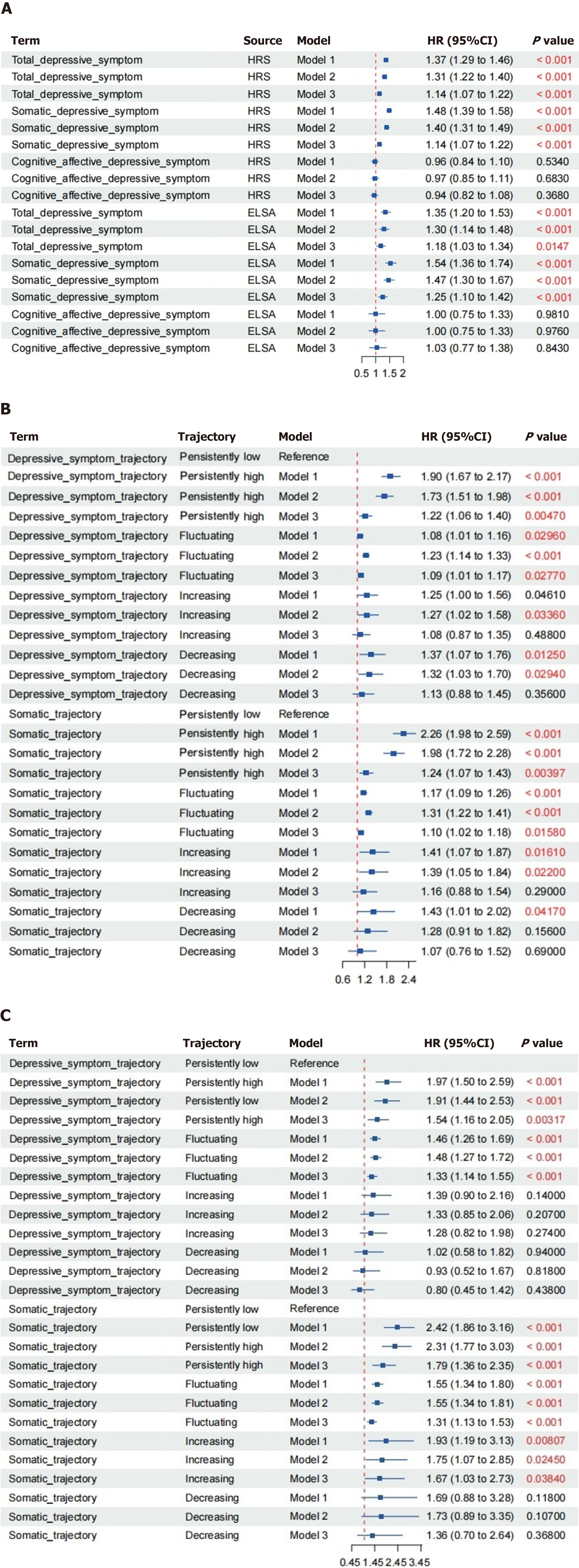Copyright
©The Author(s) 2025.
World J Diabetes. Aug 15, 2025; 16(8): 106683
Published online Aug 15, 2025. doi: 10.4239/wjd.v16.i8.106683
Published online Aug 15, 2025. doi: 10.4239/wjd.v16.i8.106683
Figure 1 An overview of the study design and results.
In the first phase of this study, a prospective cohort analysis was conducted to examine the association between total, somatic, and cognitive-affective depressive symptoms and the risk of diabetes onset. It was found that both total and somatic depressive symptoms increased the risk of diabetes. In the second phase the trajectory of depressive symptoms was determined from baseline to the second study, followed by a follow-up of diabetes occurrence. The English Longitudinal Study of Ageing cohort validated the aforementioned findings, thereby confirming the reproducibility of our study. The results showed that persistently high and fluctuating total and somatic depressive symptom trajectories promoted the development of diabetes. This study provided a new scientific basis for subsequent targeted interventions based on depressive symptoms and their trajectories to reduce the risk of diabetes. This figure was created by BioRender.com. HRS: Health and Retirement Study; ELSA: English Longitudinal Study of Ageing; HR: Hazard ratio; CI: Confidence interval; USA: United States of America; UK: United Kingdom.
Figure 2 Flowchart of the study population selection process.
HRS: Health and Retirement Study; ELSA: English Longitudinal Study of Ageing.
Figure 3 Forest plots.
A: The associations between total, somatic, and cognitive-affective depressive symptoms and the risk of diabetes in the Health and Retirement Study (HRS) and English Longitudinal Study of Ageing (ELSA) cohorts; B: The associations between trajectories of total, somatic, and cognitive-affective depressive symptoms and diabetes in the Health and Retirement Study cohort; C: The associations between trajectories of total, somatic depressive symptoms and diabetes in the English Longitudinal Study of Ageing cohort. HRS: Health and Retirement Study; ELSA: English Longitudinal Study of Ageing; HR: Hazard ratio; CI: Confidence interval.
- Citation: Zou XL, Zhou C. Persistently high and fluctuating trajectories of total and somatic depressive symptoms increase diabetes risk: Two prospective cohort studies. World J Diabetes 2025; 16(8): 106683
- URL: https://www.wjgnet.com/1948-9358/full/v16/i8/106683.htm
- DOI: https://dx.doi.org/10.4239/wjd.v16.i8.106683











